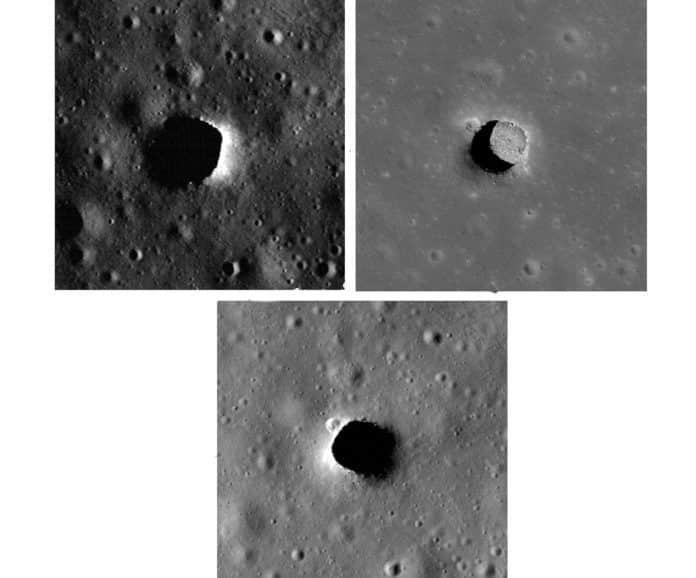There has been curious about whether pits on the Moon that JAXA’s SELENE probe discovered in 2009 offer access to caves that rovers and astronauts could explore. These features are likely created by the ceiling of a lava tube collapsing.
Using data from NASA’s Lunar Reconnaissance Orbiter (LRO) spacecraft and computer modeling, NASA-funded scientists have discovered shaded locations within pits on the Moon that always hover around a comfortable 63 F (about 17 C). The pits would make thermally stable sites for lunar exploration compared to areas at the Moon’s surface, which heat up to 260 F (about 127 C) during the day and cool to minus 280 F (about minus 173 C) at night.
Tyler Horvath, a doctoral student in planetary science at the University of California, Los Angeles, who led the new research, said, “About 16 of the more than 200 pits are probably collapsed lava tubes.”
LRO Project Scientist Noah Petro of NASA’s Goddard Space Flight Center in Greenbelt, Maryland, said, “Lunar pits are a fascinating feature on the lunar surface. Knowing that they create a stable thermal environment helps us paint a picture of these unique lunar features and the prospect of one day exploring them.”
Horvath processed data from Diviner – a thermal camera – to find out if the temperature within the pits diverged from those on the surface.
Horvath and his colleagues used computer modeling to examine the thermal characteristics of the rock and lunar dust and to chart the pit’s temperatures over time, focusing on a roughly cylindrical, 328-foot (100-meter)-deep depression about the length and width of a football field in a region of the Moon known as the Mare Tranquillitatis.
According to the findings, the temperature in the permanently shaded parts of the pit stays about 63 F or 17 C throughout the lunar day with very little variation. The Lunar Reconnaissance Orbiter Camera’s images indicate that a cave may extend from the bottom of the pit; if so, it too would have this relatively comfortable temperature.
The team, which included UCLA professor of planetary science David Paige and Paul Hayne of the University of Colorado Boulder, believes the shadowing overhang is responsible for the steady temperature, limiting how hot things gets during the day and preventing heat from radiating away at night.
A day on the Moon lasts about 15 Earth days, during which the surface is constantly bombarded by sunlight and is frequently hot enough to boil water. Brutally cold nights also last about 15 Earth days.
Journal Reference:
- Tyler Horvath, Paul O. Hayne, David A. Paige. Thermal and Illumination Environments of Lunar Pits and Caves: Models and Observations From the Diviner Lunar Radiometer Experiment. Geophysical Research Letters: 08 July 2022. DOI: 10.1029/2022GL099710
